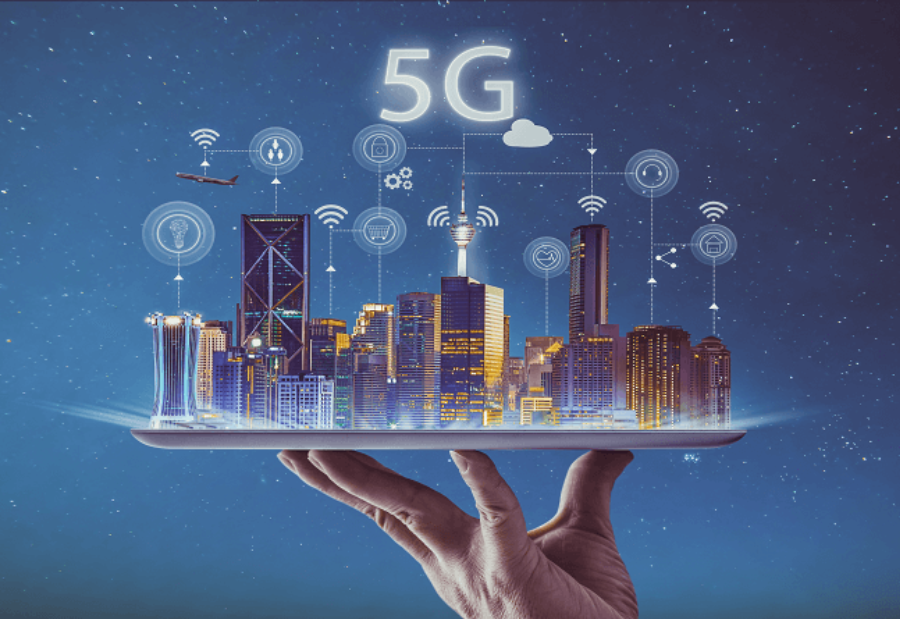We’re moving towards a digitally connected future where the combination of 5G technology and the Internet of Things (IoT) will change how industries operate. 5G offers high-speed, low-latency connectivity, and it promises to solve many challenges that traditional IoT solutions face.
The Internet of Things is already transforming how we interact with the world, from smart homes to connected machines. But as the number of IoT devices increases, current network technology struggles with speed, latency, and managing so many devices. 5G is here to fix these issues by providing faster speeds, lower latency, and higher capacity, which are all crucial to supporting the billions of IoT devices that will be in use in the future.
Today, let’s talk about how 5G is accelerating IoT adoption, its benefits, challenges, and the areas where this technological evolution is making a huge difference.
What is 5G and How Does It Differ from Previous Generations?
Before we dive into how 5G impacts IoT, let’s quickly go over what 5G is and how it differs from previous mobile networks.
5G is the fifth generation of mobile network technology. It’s designed to give us faster internet speeds, ultra-low latency, and much higher capacity than 4G and earlier networks.
Let’s break down how it differs:
Speed: 5G is up to 100 times faster than 4G. This means communication between IoT devices and servers can happen almost instantly, allowing massive amounts of data to be processed in real-time.
Low Latency: 5G promises latency as low as 1 millisecond, making it perfect for time-sensitive IoT applications that need quick responses.
Network Density: 5G can handle up to 1 million devices per square kilometer, making it scalable for crowded IoT environments like smart cities or factories.
Benefits of 5G for IoT Adoption
The arrival of 5G will speed up IoT adoption across industries by solving the limitations of earlier networks. Here are some of the key benefits:
Faster Data Transfer for IoT Devices
5G allows IoT devices to transfer large data almost instantly. This is crucial for things like autonomous vehicles, remote monitoring, and video surveillance, where data must be processed and acted on without delay.
Ultra-Low Latency for Real-Time Applications
With a latency of just 1 millisecond, 5G ensures IoT applications like industrial automation and autonomous driving can operate with minimal delays.
Greater Device Density and Scalability
5G can support up to 1 million devices per square kilometer. This makes it ideal for environments with lots of interconnected devices, like smart cities and factories, where many sensors and devices need to communicate at once.
Improved Reliability and Network Slicing
With network slicing, 5G can create customized virtual networks within its physical infrastructure. This ensures critical IoT applications get guaranteed network performance, without interference from less important services.
Cost-Effective and Energy-Efficient
5G is more energy-efficient than previous networks, meaning IoT devices that use low power (like sensors and wearables) can run for longer without draining batteries.
IoT Applications Benefiting from 5G Connectivity
Smart Cities
5G will connect a huge number of devices, enabling smart traffic systems, smart lighting, and better waste management in real-time. This will make cities more efficient and improve the quality of life for residents.
Autonomous Vehicles
Self-driving cars rely on fast data exchange between vehicles, sensors, and infrastructure. With 5G’s low latency, these cars can communicate instantly, improving safety and navigation.
Industrial IoT (IIoT)
In industries like manufacturing, 5G will enable smart machinery that can predict failures before they happen, support predictive maintenance, and improve robotics through faster communication.
Healthcare
5G will improve remote patient monitoring, allowing for instant communication between patients and doctors. It will also enable telemedicine, remote surgeries, and real-time health monitoring, even in remote areas.
Wearable Devices
Wearables like smartwatches and fitness trackers will be able to send more data faster with 5G. This will allow for real-time health monitoring and instant feedback, making the user experience better.
Challenges for 5G IoT Adoption
While 5G offers huge benefits, there are still challenges to consider:
Infrastructure Requirements
Building 5G requires a lot of investment in base stations, antennas, and fiber-optic networks. Some areas may need to upgrade their infrastructure to fully support 5G.
Security Concerns
With more IoT devices, security becomes a bigger issue. 5G can increase the risk of cyberattacks, so ensuring IoT devices are secure will be critical.
Cost of Implementation
The upfront costs of implementing 5G, including infrastructure and network upgrades, can be expensive, especially for businesses in emerging markets.
Ending Thoughts!
As 5G continues to roll out, its ability to support a connected world will only grow, and industries must prepare to take full advantage of its capabilities. The future of Internet of Things is closely tied to 5G, and those who embrace it early will be at the forefront of innovation.
Also read: Viksit Workforce for a Viksit Bharat
Do Follow: The Mainstream formerly known as CIO News LinkedIn Account | The Mainstream formerly known as CIO News Facebook | The Mainstream formerly known as CIO News Youtube | The Mainstream formerly known as CIO News Twitter
About us:
The Mainstream formerly known as CIO News is a premier platform dedicated to delivering latest news, updates, and insights from the tech industry. With its strong foundation of intellectual property and thought leadership, the platform is well-positioned to stay ahead of the curve and lead conversations about how technology shapes our world. From its early days as CIO News to its rebranding as The Mainstream on November 28, 2024, it has been expanding its global reach, targeting key markets in the Middle East & Africa, ASEAN, the USA, and the UK. The Mainstream is a vision to put technology at the center of every conversation, inspiring professionals and organizations to embrace the future of tech.




